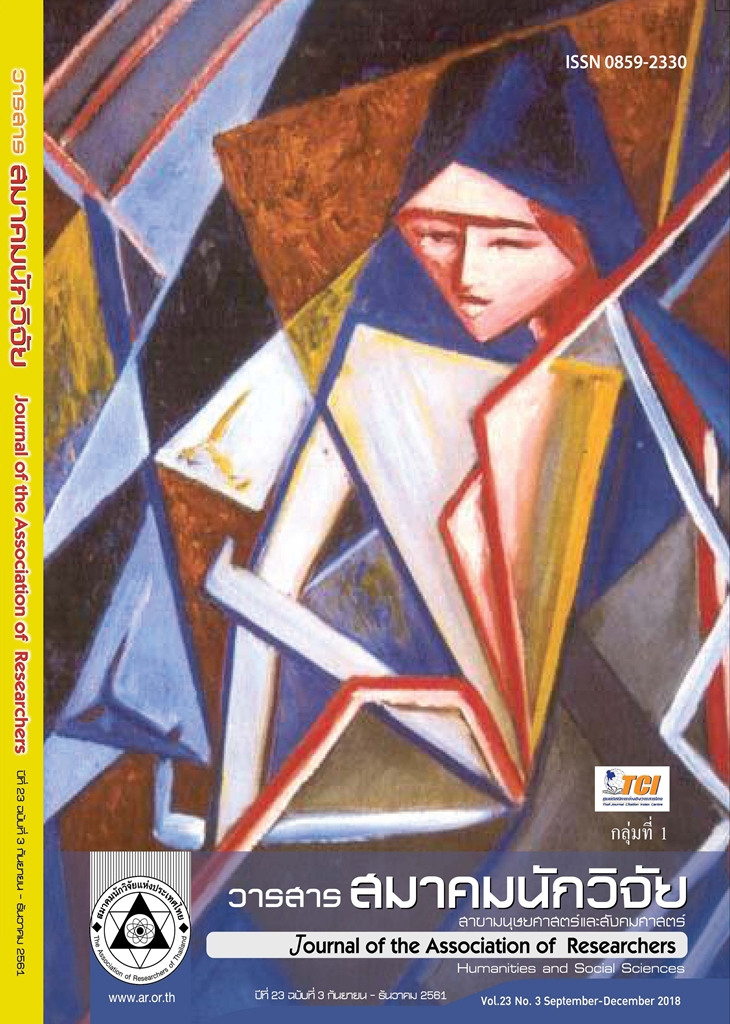An Examination of Incremental Predictive Validity of Inspirational Leadership Scale: Relationship between Leadership and Organizational Effectiveness
Main Article Content
Abstract
The main objective of this study is to test the incremental predictive validity of the inspirational leadership scale. The steps in the analytic sequence are to examine a correlation matrix, and then examine through hierarchical linear regression analyses that include the transformational, ethical and inspirational leadership concepts as predictors and the organizational effectiveness as criterion variable. The findings have showed that there is no statistically significant incremental predictive power of the inspirational leadership scale compared to the transformational leadership scale, and there is statistically significant incremental predictive power of the inspirational leadership scale compared to the ethical leadership scale.
Article Details
บทความที่ปรากฏในวารสารนี้ เป็นความรับผิดชอบของผู้เขียน ซึ่งสมาคมนักวิจัยไม่จำเป็นต้องเห็นด้วยเสมอไป การนำเสนอผลงานวิจัยและบทความในวารสารนี้ไปเผยแพร่สามารถกระทำได้ โดยระบุแหล่งอ้างอิงจาก "วารสารสมาคมนักวิจัย"
References
พงษ์เทพ จันทสุวรรณ (2554) ภาวะผู้นำ วัฒนธรรมองค์การกับประสิทธิผลองค์การของโรงเรียนในสังกัดกรุงเทพมหานคร : ตัวแบบสมการโครงสร้าง. วิทยานิพนธ์ปริญญาดุษฎีบัณฑิต. สถาบันบัณฑิตพัฒนบริหารศาสตร์, กรุงเทพฯ.
พงษ์เทพ จันทสุวรรณ (2561). การทดสอบความไม่แปรปรวนของการวัดข้ามกลุ่ม: มาตรวัดภาวะผู้นำแรงบันดาลใจ. วารสารสมาคมนักวิจัย, 23 (1), 36-48.
References
Anderson, J. C. & Gerbing, D. W. (1988). Structural equation modeling in practice: A review and recommended two-step approach. Psychological Bulletin, 103(3), 411-423.
Antonakis, J. & House, R. J. (2002). The full-range leadership theory: The way forward. In B. J. Avolio and F. J. Yammarino (Eds.), Transformational and charismatic leadership: The road ahead, (pp. 3-33).
Amsterdam: Elsevier. Bass, B. M. (1985). Leadership and performance beyond expectations. New York: Free Press.
Bass, B. M. (1998). Transformational leadership: Industrial, military and educational impact. Mahwah. NJ, Lawrence: Erlbaum.
Bass, B. M. & Avolio, B. J. (1994). Improving organizational effectiveness through transformational leadership. Thousand Oaks, CA: Sage.
Bass, B. M. & Avolio, B. J. (1997). Full range leadership development: Manual for the multifactor leadership questionnaire. Palo Alto, CA: Mind Garden.
Brown, M. E., Treviño, L. K. & Harrison, D. A. (2005). Ethical leadership: A social learning perspective for construct development and testing. Organizational Behavior and Human Decision Processes, 97, 117-134.
Burns, J. M. (1978). Leadership. New York: Harper & Row. Campbell, J. P. (1977). On the nature of organizational effectiveness. In P. S.
Goodman & J. M. Pennings (Eds.), New perspectives on organizational effectiveness, (pp. 36-41). San Francisco: Jossey-Bass.
Cameron, K. S. (1981). The Enigma of Organizational Effectiveness. In Dan Baugher (Ed.), Measuring effectiveness, (pp. 1-13). San Francisco: Jossey-Bass.
Drasgow, F. (1984). Scrutinizing psychological tests: Measurement equivalence and equivalent relations with external variables are the central issues. Psychological Bulletin, 95(1), 134–135.
Etzioni, A. (1964). Modern organizations. Englewood Cliffs, NJ: Prentice-Hall.
Haynes, S. N. & Lench, H. C. (2003). Incremental validity of new clinical assessment measures. Psychological Assessment, 15, 456-466.
Horn, J. L. & McArdle, J. J. (1992). A practical and theoretical guide to measurement invariance in aging research. Experimental Aging Research, 18(3– 4), 117–144.
Kalliath, T. J., Buledorn, A. C. & Gillespie, D. A. (1999). A confirmatory factor analysis of the competing values instrument. Educational and Psychological Measurement, 59, 143-158.
Kimberly, J. R. (1979). Issues in the creation of organizations: Initiation, innovation and institutionalization. Academy of Management Journal, 22 (3), 437-457.
Northouse, P. G. (2000). Leadership: Theory and practice. 2nd ed. London: Sage.
Quinn, R. E. (1988). Beyond rational management. San Francisco: Jossey-Bass.
Quinn, R. E. & Rohrbaugh, J. (1983). A spatial model of effectiveness criteria: Towards a competing values approach to organizational analysis.
Management Science, 29(3), 363-377. Robbins, S. P. (1990). Organization theory: Structure, design, and applications. 3rd ed. Englewood Cliffs, N.J: Prentice-Hall.
Robbins, S. P. (2005). Organizational Behavior. 11th ed. Upper Saddle River, N.J: Pearson.
Rowold, J. (2008). Relationships among transformational, transactional, and moral-based leadership: Results from two empirical studies. Leadership Review, 8, 4-17.
Venkatraman, N. & Grant, J. H. (1986). Construct measurement in organisational strategy research: A critique and proposal. Academy of Management Review, 11(1), 71-87.
Translated Thai References
Chandasuwan, P. (2010). Organizational Effectiveness: Conceptual paradox. Rom-Phruek Journal, 28(3), 133-182. (in Thai).
Chandasuwan, P. (2011). Leadership, organizational culture and organizational effectiveness of the schools managed by Bangkok Metropolitan Administration: Structural equation modeling. National Institute of Development Administration, Bangkok. (in Thai).
Chandasuwan, P. (2018). Testing measurement invariance across groups: Inspirational leadership scale. Journal of the Association of Researchers, 23 (1), 36-48. (in Thai).


